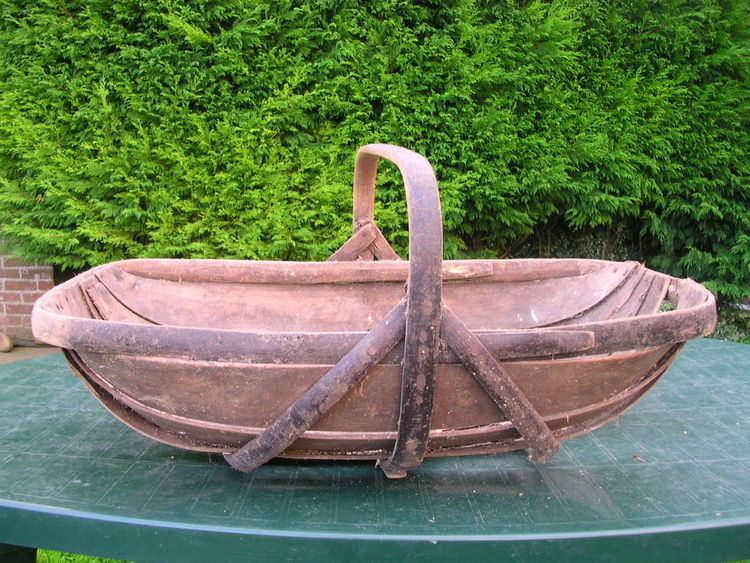 | ||
A Sussex trug is a wooden basket mainly used for gardening. It is made from a handle and rim of coppiced sweet chestnut wood which is hand-cleft then shaved using a drawknife. The body of the trug is made of five or seven thin boards of cricket bat willow, also hand-shaved with a drawknife. They were probably originated in Sussex because of the abundance of chestnut coppice and willows found on the marshes. Nails or pins used are usually copper, to avoid rust.
Shapes and sizes became standardised, the most well-known shape being the "common or garden" trug ranging in volume from one pint to a bushel. However, there is a diverse range of traditional trugs from garden and oval trugs to the more specialised "large log" and "walking stick" trugs.
History
Trugs date back to the 1500s, with active trade in Horsham.
Thomas Smith of Herstmonceux, displaying his trugs at the Great Exhibition of 1851, gave the basket wider renown; he was rewarded when Queen Victoria purchased several for members of the Royal family. Further appearances at international exhibitions followed at the 1855 Universal exhibition in Paris; the First International Forestry Exhibition in Edinburgh 1884 and London International Inventions Exhibition.
By the 1970s, Herstmonceux remained as a significant centre of trug production, with four firms operating in or near that village: Greens of Hailsham, R. Reed, R.W. Rich and Sons, and Thomas Smith and Sons.
